'Personal well-being' takes centre stage

Article content
Reviews and recommendations are unbiased and products are independently selected. Postmedia may earn an affiliate commission from purchases made through links on this page.
Moen survey taps four emerging design trends
Creative expression, personal well-being, biophilic design and future forward are the four overarching trends redefining the design industry.
Recommended Videos
“But these four big considerations don’t live in a silo,” Danielle DeBoe Harper, trend forecaster and creative strategist for consumer faucet brand Moen, says of the trends identified in her annual report. Entitled Where Past Meets Future, it’s largely based on two design shows: Milan’s Salone del Mobile and Maison & Objet in Paris.
“They really are more like a Venn diagram so at the core of all four of these trends is a holistic approach to design that values individuality, well-being, environmental consciousness and forward-thinking innovation and we call this ‘home holistic wellness,’” she says.
TREND ONE: CREATIVE EXPRESSION
This trend is about “uniqueness” and “differentiating yourself from others or expressing yourself,” says DeBoe Harper. One way to do that is by making a statement, she notes, pointing to a lighting show in Milan that featured predominantly statement lighting.
The trend was also reflected in mirrors. “It seems like a nary a single rectangular wooden framed mirror could be found anywhere in Milan or Paris this year. All the mirrors were either amorphic shapes or upholstered in fabric or lit up or a wave pattern. There’s some sort of novelty.”
Bold minimalism. “In past years, we called a similar trend ‘minimalist maximalism’ or ‘maximal minimalism,’” she says. Bold minimalism is a similar concept in which everything is streamlined but “dialed up” through such techniques as the use of a bold saturated statement colour or statement colour blocking.
Maximalism, craftsmanship. Maximalism is brought to life this year through era layering. Surrealism, meanwhile, is “imaginative and expressive,” DeBoe Harper says, pointing to a chair that looks like a large mouth with arms. Finally, craftsmanship highlights a growing demand for authenticity, quality and even sustainability in interior
design. “Designers showcased traditional artisan techniques like handweaving, carving, pottery – really enriching contemporary designs with a sense of history.”
TREND TWO: PERSONAL WELL-BEING
This theme “goes beyond physical fitness or nutrition” and is about encompassing both literal and metaphorical comfort. Examples from the design shows include a chair that transforms into a lounge. The trend also features hyper-haptic surfaces. Think high-pile rugs, soft textural fabrics on furnishings and tiles with a wave pattern that you’re inclined to touch.
Calm interiors. This trend has gained significance and traction, says DeBoe Harper. Using soft colour palettes, natural materials, organic shapes and minimalist aesthetics is one of the ways to create harmony and balance.
Nostalgia. Others find comfort in nostalgia and are “looking back to inform their future…from old country houses and heritage styles to the art deco of the 1920s and 30s, which is having a huge moment again in its 100-year anniversary.” Sofa pits and colour palettes of the 1970s are enjoying a resurgence, as are the colour palettes, florals and shapes of the 1980s.
TREND THREE: BIOPHILIC DESIGN
“We know biophilia is the human desire to commune with nature so biophilic design is design that supports your ability to commune with nature but from within your home,” says DeBoe Harper.
Desert. This year, designers are “absolutely captivated” by the desert’s earthy browns, tans, creams and brick-red clay tones, along with the textures of sand and stone. “The desert environment also is known for sustaining life in harsh conditions and embodies resilience and adaptability so in times of turmoil and stress in our external lives, we again will start even subconsciously looking for ways to build resilience in our personal environments.”
Water, geology. References to the sea, ocean and water emerged as a “captivating trend,” with designers drawing inspiration from soothing colour palettes of the ocean, the fluidity of water and the tranquility that coastal landscapes evoke. Finally, geological shapes, textures and colours you might find in minerals are also trending.
TREND FOUR: FUTURE FORWARD
This theme has emerged in the last couple of years and encompasses the trends that are either about futuristic styles or design that’s in consideration of the future, DeBoe Harper explains.
Industrial vibes. Unlike ‘industrial chic,’ which is inspired by old warehouses that were transformed into living spaces, the industrial vibes trend is about using materials like stainless steel in a “much more committed way,” such as in kitchen cabinetry and backsplashes.
Sci-fi. The future forward theme also encompasses sci-fi and futuristic design, which is very much about space-age colour palettes, blob amorphic shapes and experimental textures. When it comes to sustainability, meanwhile, it’s about the
continued use of ocean recycled plastic and 3D-printed furniture using waste materials, along with increased transparency in things like sourcing and local production.
Metals, glass, stone. Metals are being applied in “large, unexpected ways,” DeBoe Harper says, pointing to a hammered chrome ceiling as an example. Glass, meanwhile, “is no longer the humble background servant. It’s demanding the spotlight right now.”
Glass blocking, for instance, is making a comeback. DeBoe Harper also predicts increased use of cork and says “highly textural, heavily-veined stone that really makes a statement” as well as warm woods – especially in kitchen and bathroom cabinetry – are also on trend.
Colours. It’s time to embrace bold saturated orange as well as autumnal versions of the hue, such as terra cotta. Coco offers a “sophisticated yet unpretentious alternative to traditional neutrals.” Submissive darks are often paired with bold florals or metallics for a “super luxurious” effect. Pastels and digital pastels as well digital brights that transform spaces in “really lively and really engaging areas” are also popular.

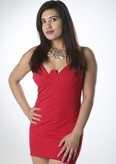



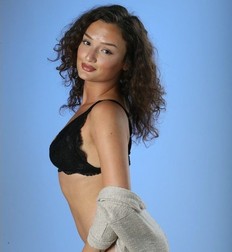
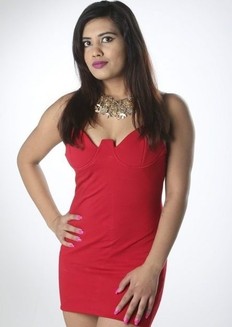

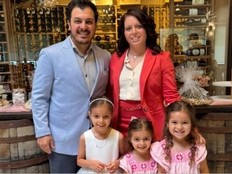
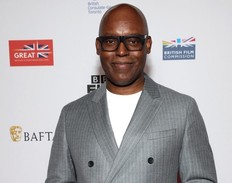

Postmedia is committed to maintaining a lively but civil forum for discussion. Please keep comments relevant and respectful. Comments may take up to an hour to appear on the site. You will receive an email if there is a reply to your comment, an update to a thread you follow or if a user you follow comments. Visit our Community Guidelines for more information.